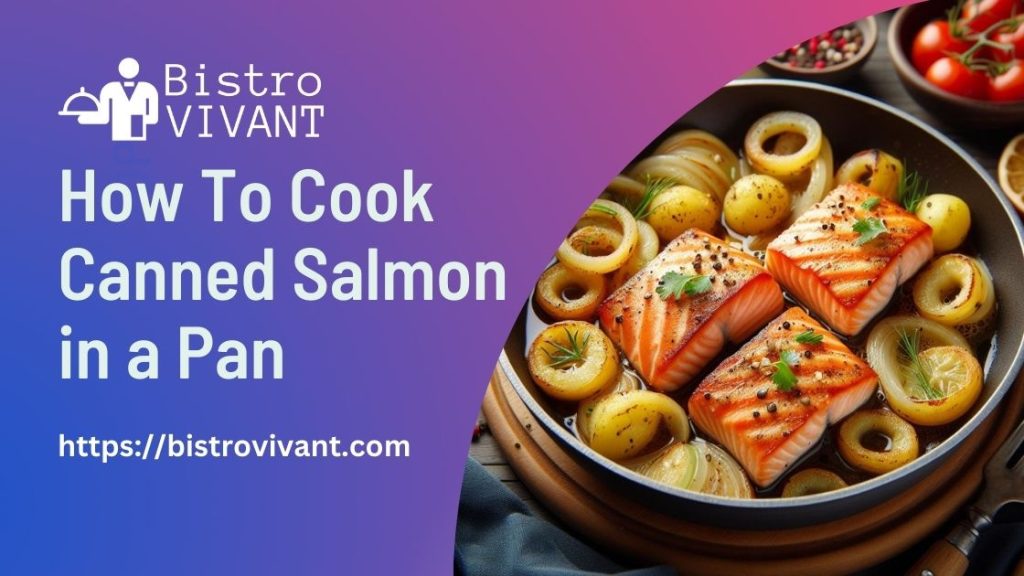Delve into the art of cooking canned salmon with our expert guide on preparing this delectable dish in a pan. Learn how to elevate the flavors and make a quick, nutritious meal bursting with omega-3 fatty acids and essential nutrients. In this comprehensive tutorial, we will walk you through the step-by-step process to achieve a perfectly seared exterior while preserving the tender, flaky texture of the salmon.
Embrace the versatility of canned salmon with our cooking tips and unleash your culinary creativity. For more inspiring canned salmon recipes, check out 12 Genius Canned Salmon Recipes to continue your flavorful journey in the kitchen.
Key Takeaways:
- Choose high-quality canned salmon: Opt for wild-caught canned salmon, as it usually has better flavor and nutritional value compared to farmed salmon. Look for options packed in water or olive oil for a healthier choice.
- Enhance the flavors: Use aromatics such as garlic, onions, or herbs like parsley and dill to elevate the taste of canned salmon when cooking in a pan. Adding a splash of lemon juice or a dash of soy sauce can also bring out the flavors.
- Be mindful of cooking time. Canned salmon is already cooked, so you only need to heat it through in the pan. Overcooking can result in a dry and less flavorful dish, so aim to heat the salmon just until it’s warmed through.
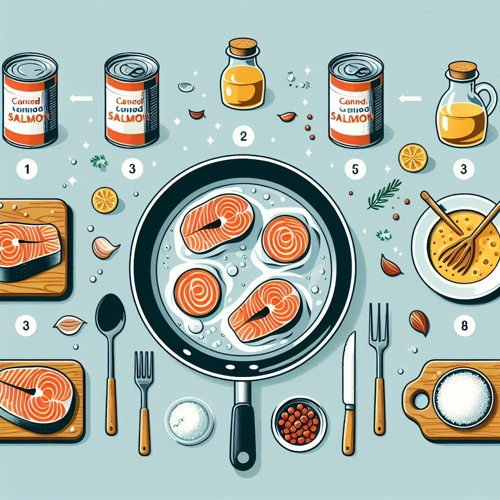
Preparing to Cook
Obviously, cooking canned salmon in a pan opens up a world of possibilities for delicious meals. If you’re looking for inspiration and ideas for recipes, check out These Easy Canned Salmon Recipes Taste Gourmet, But ….
Choosing Your Canned Salmon
To begin, it’s essential to select the right canned salmon for your dish. When picking canned salmon, look for options packed in olive oil or water rather than brine for more flavorful results. Additionally, consider whether you prefer boneless and skinless salmon or if you’re fine with bones and skin in your dish.
Key Factors in Pan-Frying Salmon
For successful pan-frying, you should pay attention to a few key factors. First, make sure your skillet is preheated before adding the salmon. This will help create a crispy crust on the outside while keeping the inside moist and tender. Secondly, season your salmon generously with salt, pepper, and other seasonings of your choice to enhance the flavors.
- Pre-heat the skillet before adding the salmon.
- Generously season the salmon with salt, pepper, and other seasonings.
- Cook the salmon until it reaches an internal temperature of 145°F to ensure it’s fully cooked.
Plus, make sure not to overcrowd the pan when cooking multiple pieces of salmon. Overcrowding can lower the temperature of the skillet and result in uneven cooking. Keep a close eye on the salmon as it cooks to prevent overcooking. Any overcooked salmon can result in a dry and tough texture.
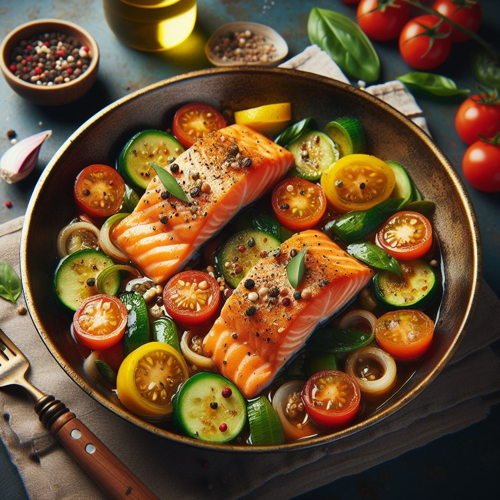
How-To Guide for Pan-Cooking Canned Salmon
Some may overlook the potential of canned salmon in creating a delicious and nutritious meal. With the right techniques, canned salmon can be transformed into a delectable dish that will leave your taste buds wanting more. In this guide, we will walk you through the steps to pan-cook canned salmon to perfection.
Draining and Prepping the Salmon
Canned salmon typically contains bones and skin that need to be removed before cooking. Begin by draining the liquid from the can and carefully picking out any visible bones and skin. Once cleaned, flake the salmon into a bowl and season it with your desired herbs and spices. Mix well to ensure the flavors are evenly distributed before moving on to the cooking process.
Pan-Frying Techniques and Tips
Canned salmon can be pan-fried to achieve a crispy outer layer while keeping the inside moist and flavorful. Heat a non-stick skillet over medium heat and add a bit of olive oil or butter. Place the seasoned salmon flakes in the pan and cook for a few minutes on each side until a golden crust forms. Avoid overcrowding the pan to ensure even cooking and a nice sear.
- Use high-quality salmon for better taste and texture.
- Season the salmon well to enhance the flavors.
- Don’t overcook the salmon to prevent it from becoming dry and tough.
Pan-frying Techniques and Tips
When pan-frying canned salmon, it is essential to maintain a balance between heat and cooking time to achieve the perfect texture. The high heat helps create a crispy exterior, while the quick cooking time preserves the moistness inside. Knowing when to flip the salmon is crucial to preventing it from falling apart and ensuring even browning.
- Monitor the heat to prevent burning.
- Flip the salmon gently to avoid breaking it apart.
- Let the salmon rest before serving to allow the flavors to fully develop.
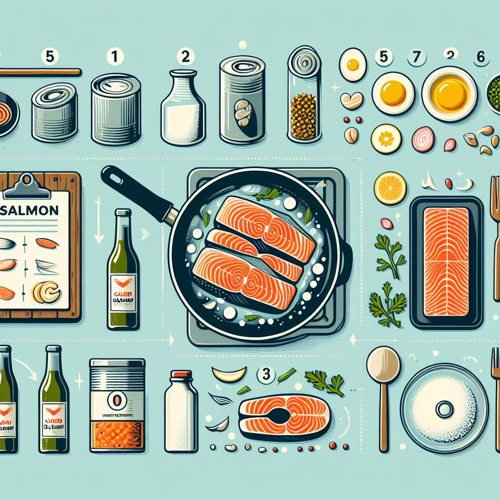
Flavor Enhancement
To truly savor the flavors of your canned salmon cooked in a pan, it’s essential to enhance its taste with the right seasonings and pairings. Whether you’re looking to elevate the natural taste of salmon or add a creative twist, there are numerous ways to enhance the flavor profile of this versatile ingredient.
Seasoning Your Canned Salmon Properly
Canned salmon can greatly benefit from proper seasoning to bring out its full potential. Consider using a combination of herbs like dill, parsley, and thyme, along with spices such as garlic powder, paprika, and black pepper. A sprinkle of lemon zest or a dash of soy sauce can also add depth and complexity to the dish. Experiment with different seasonings to find the perfect balance that suits your taste preferences.
Creatively Pairing with Sides and Garnishes
Properly pairing your canned salmon with complementary sides and garnishes can take your dish to the next level. Opt for light and refreshing accompaniments like a citrusy quinoa salad, roasted vegetables, or a flavorful avocado salsa. Garnishes such as fresh herbs, a drizzle of balsamic glaze, or a dollop of tangy yogurt can add visual appeal and enhance the overall taste experience.
A well-thought-out pairing can elevate the flavors of your canned salmon dish, creating a harmonious and satisfying meal. Consider the texture, color, and flavor profile of the sides and garnishes to create a balanced and visually appealing plate. Experiment with different combinations to discover your favorite flavor pairings that will leave your taste buds delighted.
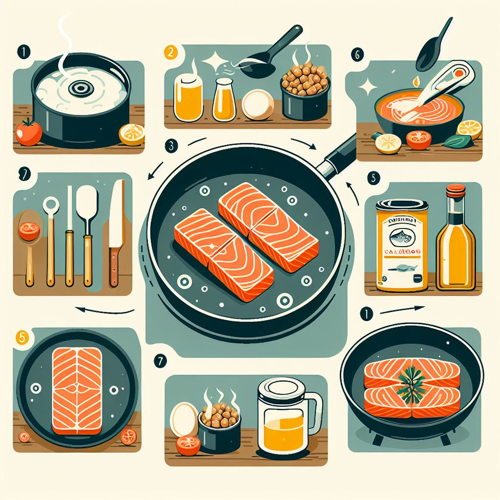
Troubleshooting Common Cooking Issues
What to Do if the Salmon Sticks to the Pan
Despite your best efforts, sometimes canned salmon can stick to the pan while cooking. If this happens, do not panic. Sticks can occur if the pan is not properly preheated or if the salmon has not been dried thoroughly before cooking.
To prevent the salmon from sticking, make sure the pan is hot before adding the salmon fillets. You can also lightly coat the pan with olive oil or butter to create a non-stick surface. If the salmon still sticks, gently loosen it with a spatula, being careful not to break the fillets.
How to Tell When Canned Salmon Is Perfectly Cooked
Cooking canned salmon to perfection is essential for bringing out its delicious flavors. The easiest way to tell if the salmon is cooked through is by checking its color and texture. The fish should be opaque and easily flake with a fork when it is done.
To ensure that the salmon is not overcooked, remove it from the heat as soon as it reaches an internal temperature of 145°F. Overcooked salmon can become dry and lose its juiciness, so it’s crucial to pay attention to the cooking time and temperature.
Conclusively
Learning how to cook canned salmon in a pan is a simple and convenient way to enjoy a healthy and flavorful meal. By following the easy steps outlined in this guide, you can elevate the taste of canned salmon and create a delicious dish in no time. Whether you’re a beginner in the kitchen or a seasoned cook, this method is a great addition to your culinary repertoire. So, next time you have canned salmon in your pantry, don’t hesitate to savor the flavors by cooking it in a pan!
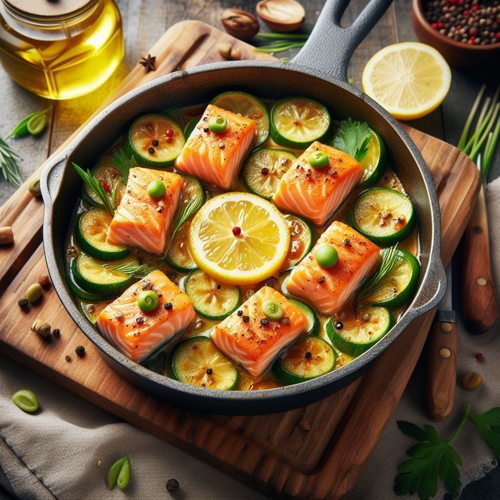
FAQ
Q 1: Why should I savor the flavors of canned salmon?
Ans: Canned salmon is a convenient and affordable source of protein that is rich in omega-3 fatty acids, vitamins, and minerals. Learning how to cook canned salmon in a pan allows you to easily incorporate this nutritious ingredient into your meals while enjoying its delicious taste.
Q 2: How do I choose the right canned salmon for cooking?
Ans: When selecting canned salmon for cooking, opt for wild-caught salmon for a fresher and more flavorful dish. Look for options packed in water or olive oil, as they retain more of the salmon’s natural taste compared to those packed in brine. Additionally, check the label for sustainability certifications to support environmentally friendly fishing practices.
Q 3: What is the best way to cook canned salmon in a pan?
Ans: To cook canned salmon in a pan, start by heating some olive oil or butter in a skillet over medium heat. Add the canned salmon (drained of any excess liquid) to the pan and break it up into smaller pieces with a spatula. Season the salmon with herbs, spices, or a splash of lemon juice for added flavor.
Cook for 2-3 minutes until heated through, stirring occasionally. Serve the cooked salmon on a bed of greens, mixed into pasta, or alongside roasted vegetables for a quick and nutritious meal.
 https://bistrovivant.com is a participant in the Amazon Services LLC Associates Program, an affiliate advertising program designed to provide a means for website owners to earn advertising fees by advertising and linking to Amazon (.com,.co.uk,.ca, etc.) and any other website that may be affiliated with the Amazon Service LLC Associates Program. As an Amazon Associate, I earn from qualifying purchases.
https://bistrovivant.com is a participant in the Amazon Services LLC Associates Program, an affiliate advertising program designed to provide a means for website owners to earn advertising fees by advertising and linking to Amazon (.com,.co.uk,.ca, etc.) and any other website that may be affiliated with the Amazon Service LLC Associates Program. As an Amazon Associate, I earn from qualifying purchases.

